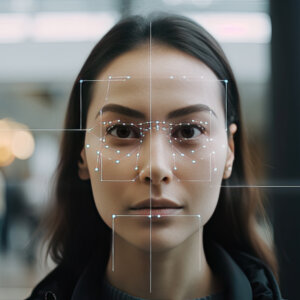
6 Ways AI Is Transforming Data Sharing and Security in Law Enforcement
As digital ecosystems expand, so does the complexity of managing, analyzing, and securing large volumes of data across public safety agencies. From IoT (Internet of Things) sensors and connected vehicles, to generative AI (Artificial Intelligence) and deepfakes, today’s law enforcement landscape is defined by both opportunity and risk.
Agencies now rely on AI to process data efficiently, enhance intelligence sharing, and mitigate growing threats to privacy and operational integrity. But integrating AI into law enforcement workflows raises critical questions around interoperability, ethical use, and security. This article explores six key themes shaping how AI influences data sharing and security for law enforcement and public safety organizations.
1. Data Saturation and Security in the Age of IoT
Modern investigations are often built on a foundation of digital data collected from IoT devices, including smart homes, vehicles, wearables, and personal electronics. These “digital witnesses” provide valuable context, but introduce significant data volume and privacy challenges.
- A single connected vehicle can generate up to 25GB of data per hour.
- With an average U.S. driver spending over 17,600 minutes per year on the road, one vehicle could generate over 5,000 terabytes of data annually.
- IoT data (e.g. key fob logs or WiFi usage) has been used to identify suspects, such as in a homicide case involving a Nintendo Switch that reconnected to a network days after the incident.
However, sorting massive amounts of raw data without violating privacy or overstepping legal boundaries can be a challenge for public safety agencies. Platforms, like Kaseware, offer geospatial mapping and entity extraction tools that help analysts securely ingest, contextualize, and correlate data points across connected devices, enhancing investigative speed and scope.
2. AI Applications in Law Enforcement Operations
Artificial intelligence is increasingly used to turn raw data into actionable intelligence. From reporting to identifying crime patterns, AI is becoming a core operational tool. Yet its effectiveness hinges on reliable, secure, and transparent implementation.
Key operational uses of AI in public safety:
- Report Generation: Automate initial drafts for incident reports.
- Policy Development: Assist in creating internal documentation and applications.
- Crime Data Analysis: Use predictive analytics to forecast trends and identify hotspots.
- Public Interfaces: Manage non-emergency inquiries and citizen engagement.
Kaseware’s AI capabilities, powered by Azure Cognitive Services, include:
- Vision analytics to detect objects in images.
- Speech-to-text transcription for easier audio analysis.
- Entity extraction to identify people, places, and objects within narrative text.
It’s important to distinguish between generative and analytical AI—especially in law enforcement, where accuracy is critical. While generative AI creates new content based on data patterns (and can introduce inaccuracies), Kaseware’s AI tools use analytical AI. This means they only process and extract insights from existing information within the platform, helping teams find, summarize, and correlate data more efficiently—without generating new or unverified content.
These tools reduce manual workload and improve consistency, but oversight is essential. The NIST AI Risk Management Framework and the DHS Playbook for Public Generative AI Deployment offer guidelines for reliable and ethical AI use in sensitive environments.
3. Intelligence Sharing and Interoperability
Despite the power of AI and connected systems, many law enforcement agencies remain siloed—operating on outdated platforms that restrict data flow.
Consequences of siloed systems include:
- Redundant investigations across jurisdictions.
- Delayed response to emergent threats.
- Fragmented intelligence and lost context.
- Risk becoming bottlenecks rather than assets.
AI-enhanced interoperability requires:
- Role-based access controls to ensure only authorized personnel access sensitive data.
- End-to-end encryption to secure information at rest and in transit.
- Real-time updates via secure mobile apps or cloud-hosted platforms.
Kaseware supports these needs through tenant-sharing functionality, customizable permissions, and encrypted public portals that enable secure tip collection and agency collaboration.
4. AI-Driven Threats and the Rise of Deepfakes
While AI supports legitimate operations, it also empowers malicious actors. Deepfake technology now enables fraud, impersonation, and disinformation at a level never before seen.
Common AI-enhanced threats include:
- Voice cloning for virtual kidnapping or phishing scams.
- Deepfake videos to impersonate officers or manipulate evidence.
- Automated misinformation campaigns targeting the public or internal stakeholders.
Response tools and best practices:
- Detection tools to flag media anomalies.
- Federally compliant connectors (e.g., Microsoft’s FedRAMP-certified AI services) for secure analysis.
- Staff training to recognize synthetic content and validate source authenticity.
Kaseware’s platform integrates behavioral analytics and redaction tools to support media analysis and misinformation defense.
5. Privacy and Data Protection in the Face of Breaches
The risk of exposure increases as agencies collect more data. In recent years, national breaches have leaked everything from telecom metadata to healthcare records. AI accelerates this risk by expanding the tools available to malicious actors.
Key privacy concerns include:
- Data Brokers: Aggregators selling public and private data.
- AI-Enhanced Phishing: More convincing and personalized attacks.
- Digital Exhaust: Unintended data trails left across platforms.
Recommended mitigations:
- Use dedicated tools to monitor personal data exposure.
- Conduct biannual privacy reviews on social media and system accounts.
- Segregate sensitive data in AI models and never input confidential information into public AI platforms.
Kaseware’s role-based access and anonymous reporting portals help agencies maintain secure, privacy-conscious workflows.
6. Bias and Reliability in AI Systems
For AI to be truly transformative in law enforcement, it must be trusted. That requires addressing the known risks of bias, error, and lack of explainability in AI models.
Sources of AI bias:
- Computational/Statistical: Poor training data or flawed model design.
- Cognitive: User assumptions and automation bias.
- Systemic: Mismatched inputs or out-of-scope applications.
AI tools can still be helpful, but only when used with:
- Clear documentation of intended use cases.
- Transparent auditing and version control.
- Human review and correction of AI-generated outputs.
Kaseware’s human-in-the-loop design philosophy ensures its AI tools support, not replace, investigators—aligning outputs with legal standards and operational goals.
Building the Future of AI-Empowered Public Safety
As artificial intelligence continues to reshape the landscape of public safety, agencies must move beyond curiosity and into readiness—adopting AI tools not simply for efficiency, but with a clear-eyed focus on ethics, interoperability, and public trust. The next phase of AI will not be defined by flashy features, but by the agencies that use it responsibly to unify data, protect privacy, prioritize cross-agency collaboration and strengthen investigative precision.
Now is the time to proactively build adaptive infrastructures, modernize data-sharing protocols, and train personnel on both the power and pitfalls of these evolving technologies. Because the question is no longer if AI will transform law enforcement, but how ready we are when it does.
Artificial intelligence is already reshaping the operational landscape for public safety and law enforcement. But its impact on data sharing and data security depends entirely on how it’s deployed.
To capitalize on its potential, agencies must:
- Modernize their data infrastructure.
- Adopt interoperable, encrypted systems.
- Use AI transparently and ethically.
- Train staff to spot misuse and manage AI’s limitations.
By combining secure platforms like Kaseware with emerging best practices from organizations like NIST and DHS, agencies can foster a data-sharing environment that is not only efficient but trustworthy.
Ready to transform how your agency shares and secures data?
Request a Kaseware demo to see how AI-driven tools can empower your team.








